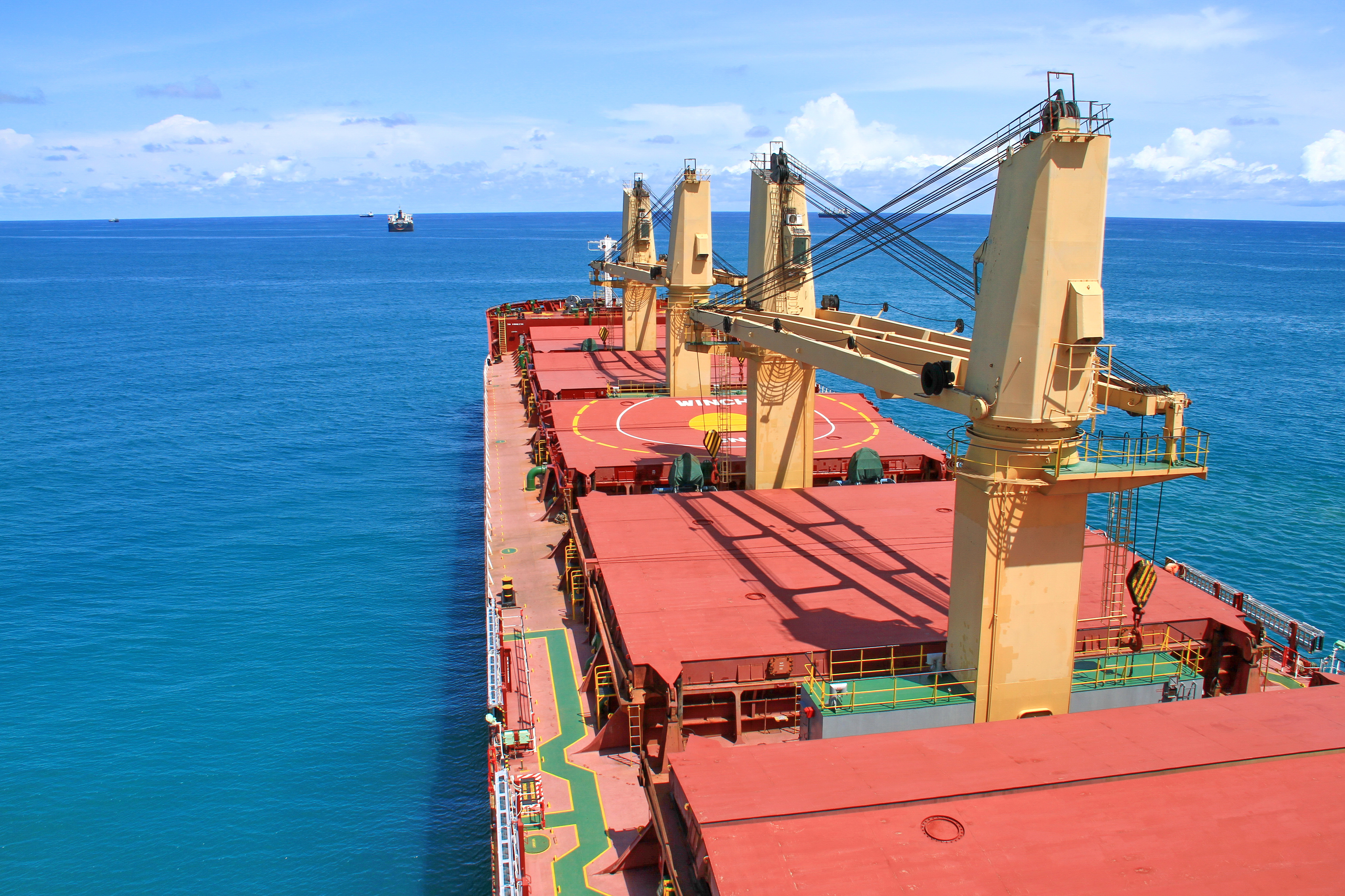In time, it is likely we will divide the past into two periods: before coronavirus and after coronavirus. At the start of April 2020, however, it is all about the here, which at this point is something of a dystopian nightmare.
The spread of the coronavirus (COVID-19) initially shut down huge areas of China through February and into March, killing thousands and shattering exports, imports and GDP growth. Since then, it has spread to most corners of the world. The death toll is pushing 36,000 worldwide, including more than 10,000 in Italy, and infections have surpassed 770,000, including 145,000 in the United States.
As economic growth forecasts are downgraded almost daily, increasingly it seems that if the world suffers ONLY a recession in 2020, we will have cause to be thankful. Most analysts expect everything to get worse before it gets better.
As for the international trade in grains and soybeans, well, it is a mixed picture. Physical and future pricing has been highly volatile and currency markets have been in violent flux. Pressures on production and supply chains have been tightening due to social distancing and self-isolation measures. And, in many countries, governments are prioritizing domestic markets over exports as shoppers stockpile staple goods and borders are locked down.
However, thus far at least, although the nature of demand has changed, the physical movement of grains and soybeans between buyers and sellers has continued relatively smoothly in terms of logistics and shipping. Mostly this is because the transportation of commodities has, so far, been excluded from COVID-19-related restrictions by the governments of major exporters.
“Coronavirus provoked panic purchases in the consumer market (in the Black Sea region), but unlike in the US or Europe, they did not become massive,” Maksym Kharchenko, freight market analyst at UkrAgroConsult, told World Grain in late March. “The store shelves are full as usual. There are just small delays in deliveries because of increased demand. The market was again and again shaken by rumors that grain exports from Ukraine might be restricted, but they were free of any administrative restrictions as of March 25.”
Shipping smoothly; future unclear
On the high seas, dry bulk shipping freight rates fell initially as China quarantined large parts of the country in February. However, shipping rates for vessels used in grain transport (those below Capesize) recovered once China got back on its feet. Exports out of the Black Sea and Brazil also helped support freight rates for smaller bulk carriers through the first three months of 2020. As a result, the Baltic Dry Index (see chart) in the first quarter of this year looks not dissimilar to the same period of 2019 when a season lull dragged down the cost of shipping.
What happens next is difficult to discern given the wide number of variables in play as a result of COVID-19, not least the longer-term implications for production and consumption. As the International Grains Council’s (IGC) March market report made clear, making forward predictions is fraught with danger and uncertainty.
“While some commodities have seen a sharp upturn in near-term demand, especially for rice and wheat-based foods, weakening economic conditions could dampen usage in the longer term, particularly for industrial products such as maize-based ethanol and starch,” the IGC noted. “Although import buying of some commodities has accelerated in recent weeks, logistical challenges are being reported as movement constraints and quarantine measures become widespread. Transportation restrictions could also hamper the distribution of farm inputs and disrupt spring fieldwork. Consequently, the Council’s projections for supply and demand are tentative until the progress and duration of the pandemic become clearer.”
Regulatory uncertainty and fear
IGC economist Alexander Karavaytsev told World Grain the behavior of market participants was increasingly volatile.
“With an upsurge in domestic demand due to panic buying, some exporters are now reportedly considering capping or banning shipments of certain grains/oilseeds, although domestic availabilities mostly appear to be adequate,” he said.
“With an upsurge in domestic demand due to panic buying, some exporters are now reportedly considering capping or banning shipments of certain grains/oilseeds, although domestic availabilities mostly appear to be adequate,” he said.
Karavaytsev continued: “Fears of export bans prompt stockpiling by importers and drive commodity prices up even though estimates suggest global stocks are ample. At the same time, farmers start to hold back supplies in expectation of higher prices. This has been the case for soybeans and maize in Argentina, where grower sales have receded despite progressing harvests of both commodities.”
Much attention — especially in shipping markets — will be focused on Chinese demand and the level of exports out of South America in the coming months.
“As we enter the Latin American grains export season, long haul soybean shipments from Brazil to China will drive an uptick in Panamax bulker demand,” predicts shipping analyst MSI. “A strong harvest in Brazil will support trade and underpin a growing share of Chinese consumption from Brazil.”
South America

Understandably then, the temporary disruption to soybean deliveries to ports and crushers in Argentina and Brazil as local authorities blocked movement in some areas in a bid to stop the spread of COVID-19 during March caused consternation among traders and shippers. The issue seemed to have been resolved toward the end of the month, although port workers in Argentina were demanding a suspension of all operations due to virus-related risks and other personal safety precautions were also slowing shipments.
“Personnel and travel constraints have generally slowed the completion of paperwork at ports,” Karavaytsev said. “Additionally, in Brazil, which heavily relies on road transport to deliver supplies to ports, older truckers reportedly refuse to work due to risks, while some accept only short trips as road infrastructure closures — cafes, tire shops, etc. — make long-haul journeys difficult. It should be noted that these disruptions are coming at a time when many importers rely on the region for supplies — US and Black Sea grain/oilseed harvests are months ahead.”
Despite the disruption, Brazil’s soybean dispatches totaled 5.1 million tonnes in February, only marginally lower year-on-year, with shipping line-ups indicating March volumes could be the largest ever for that particular month, according to the IGC. Assuming supply chains continue to function and that buying by China features significantly, the IGC forecasts that Brazil’s soybean exports in 2020-21 (February to January) will total around 75.3 million tonnes, compared to 73.9 million tonnes the previous year.
Black Sea
In the Black Sea region, thus far exports from Ukraine have continued unabated. Indeed, they accelerated 15% month-over-month in March as supply chains from farm to port continued to function as normal, although terminals and silos in Ukraine have now imposed quarantine measures and health checks for employees, and seafarers are prohibited from disembarking vessels.
“Over March 1-25, their volume included 985,000 tonnes of wheat, 2.66 million tonnes of corn and 183,000 tonnes of barley,” Kharchenko said. “A total 44.7 million tonnes of grains have been exported this season.”
UkrAgroConsult’s forecast for 2019-20 grain exports from Ukraine remains unchanged at 52 million tonnes, meaning the export potential of Ukraine for the rest of the marketing year amounts to 7.3 million tonnes.
“As Ukrainian wheat stocks continue to run out, the presence of Ukraine in the world wheat market will decrease,” Kharchenko said. “Therefore, the share of Russian wheat, whose 2019-20 exports are 15% behind last year, is to expand. Our forecast for the further pace of Russian wheat exports is optimistic: the crude oil price decline is pressuring the Rouble, consequently pushing up domestic prices. Therefore, it makes financial sense for Russian farmers to accelerate grain sales in the near term. As of today (March 27), the Russian government has imposed no export restrictions either.”
US-China trade

The phase one trade deal between the United States and China earlier this year was supposed to support higher US exports of soybeans and other agricultural products as China ramped up its purchases. Thus far, however, that trend has not materialized.
“Earlier in the current month (March), tariff waivers were issued to Chinese processors for the purchase of US supplies, but still — aside from reports that some cargoes were taken recently for April shipment from the Pacific North West (120,000 tonnes was reported), heavy volumes have not been secured,” said Darren Cooper, senior economist at the IGC. “We saw big purchases by China through to mid-December as trade negotiations with the US progressed, but there has been very little since.”
Outstanding sales on the US book are especially small and it would need a significant ramping up of export sales in the coming months for the official forecast of a small year-on-year increase in US total shipments to be achieved, said Cooper.
“Almost certainly given the volumes we are talking about, this would require large purchases by China,” he added. “However, as things stand, even with the removal of tariffs as per the waiver, Brazilian supplies are still very competitive given that a fairly big crop is filling marketing channels and the weakness of the exchange rate.”
Shipping costs ahoy

Predicting the cost of grain shipping with so many variables in the air is difficult at present. In terms of vessel supply, MSI notes that around 65% of the orderbook scheduled for delivery this year is being constructed in China, but just a single dry bulk vessel was delivered in China in February out of a total of 24, suggesting that significant slippages should be expected through 2020.
“The current economic turmoil offers the yards a chance to re-organize the delivery schedule to help address an emerging problem — the orderbook is heavily front-loaded and dry bulk shipbuilding activity in China will drop off a cliff in 2021 unless the schedule is effectively managed,” the analyst said.
In terms of dry bulk demand, the slowing rate of infections in China and government policies designed to boost economic activity are positives although this is being offset by lockdowns elsewhere. Grain is set to be a major contributor to bulk carrier demand if supply chains are kept open.
“The shutdowns have (so far) not resulted in major disruptions to supply chains, while the existing issues are seemingly being resolved,” Karavaytsev said. “However, the overall uncertainty surrounding the duration and severity of the pandemic has seen both exporters and importers focus on national food security. While this may limit exports from some countries in the short term, a higher level of stocks in importing countries as a precaution may become a new normal after the pandemic.”
Karavaytsev predicted that new layers of bureaucracy and additional safety and quarantine procedures also will continue to impede grain logistics in the coming months.
“Apart from a slowdown in paperwork, delivery periods tend to be increasing due to quarantine measures at ports,” he added. “Many countries have introduced additional screening and mandatory 14-day quarantine rules for vessels coming from certain countries. This may increase the cost of shipment in some cases because of more time charter-chargeable days.”
For its part, MSI expects the cost of shipping over the next six months to be determined by whether the pace of decline in daily infections in China continues, and whether commodity producers in key exporting countries such as Brazil, Australia and Indonesia continue to largely escape the worst ravages of COVID-19.
Should these two conditions prevail, MSI expects a government-led stimulus in China to prevent the collapse of bulk carrier pricing. Should those conditions not prevail, all bets are off.
Follow our breaking news coverage of the coronavirus/COVID-19 situation.
Michael King is a multi-award-winning journalist as well as a shipping and logistics consultant. He also supplies an array of corporate services - www.mkingassociates.com. For more information, e-mail [email protected].






